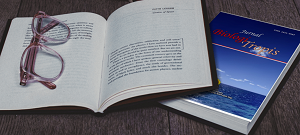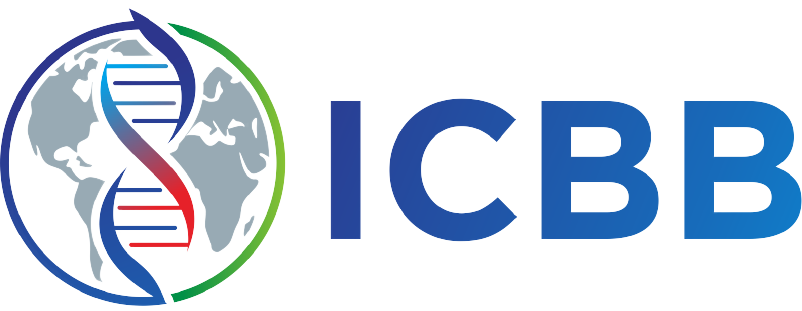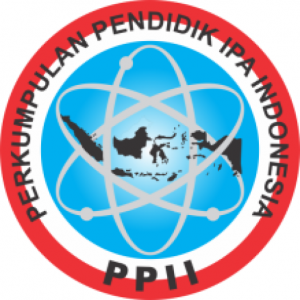Organoleptic Test of Herbal Tea Made with Corn Silk (Zea Mays L.), Papaya Seeds (Carica papaya L.) and Dragon Fruit Peels (Hylocereus polyrhizus L.)
Authors
Atha Adiwidya Ludfi , Frichelle Amelia Putri , Keyla Permata Ferris , Azizah Risqi Putri Hartoyo , Farel Ardiansyah , Aliya BahiraDOI:
10.29303/jbt.v25i1.8379Published:
2025-01-30Issue:
Vol. 25 No. 1 (2025): Januari - MaretKeywords:
Antioxidants, corn silk, dragon fruit peels, flavonoids, papaya seeds.Articles
Downloads
How to Cite
Downloads
Metrics
Abstract
Tea (Camellia sinensis) is one of the most widely consumed beverages globally, valued for its economic, health, and cultural benefits. In Indonesia, abundant natural materials with antioxidant properties, such as dragon fruit peels, corn silk, and papaya seeds, are often discarded as waste. This study aimed to utilize these materials to create teatrasi herbal tea and evaluate its antioxidant and flavonoid content, sensory attributes, and overall acceptability. method and analysis the process involved material preparation, thorough washing, drying at specific temperatures and times, grinding, and packaging. Three formulations were tested, with Formula 3 (40% corn silk, 20% papaya seeds, and 40% dragon fruit peels) being the most favored based on hedonic tests. Antioxidant and flavonoid analyses confirmed strong antioxidant activity (IC50: 89.27 ppm) and high flavonoid content (884.64 mg/L QE) in Formula 3. Results organoleptic tests highlighted its distinctive corn silk aroma, reddish-brown color, and mild flavor. Respondents rated its aroma, color, and taste with favorability levels of 93.75%, 90.62%, and 92.70%, respectively, achieving an overall acceptance rate of 92.29%. Conclusion, this research demonstrates the potential of converting underutilized natural resources into sustainable, health-enhancing beverages.
References
Anggraini, D. I. (2017). Rambut jagung (Zea mays L.) sebagai alternatif tabir surya. Majority Medical Journal of Lampung University, 7(1), 31-35.
Aboagye, G., Tuah, B., Bansah, E., Tettey, C., & Hunkpe, G. (2021). Comparative evaluation of antioxidant properties of lemongrass and other tea brands. Scientific African, 11, e00718. 10.1016/j.sciaf.2021.e00718.
Alwi, A. N. S., & Laeliocattleya, R. A. (2020). Potensi Teh Herbal Rambut Jagung (Zea mays L.) Sebagai Sumber Antioksidan: Kajian Pustaka. Jurnal Ilmu Pangan dan Hasil Pertanian, 4(1). 10.26877/jiphp.v4i1.4056.
Bangun, P. P. A., & Rahman, A. P. (2021). Analisis kadar total flavonoid pada daun dan biji pepaya (Carica papaya L.) menggunakan metode spektrofotometer UV-vis. Jurnal Ilmiah Farmasi Attamru, 2(1), 1-5. https://doi.org/10.31102/attamru.v2i1.1263.
Bani, D. B., Mushollaeni, W., & Sasongko, P. (2024). Pemanfaatan Biji Pepaya Dalam Pembuatan Bubuk Kopi Kombinasi Dengan Biji Kopi Arabika Asal Sumba Barat. Buana Sains, 23(2), 93-104. https://doi.org/10.33366/bs.v23i2.4840
Budilaksono, W. (2014). Uji aktivitas antioksidan fraksi n-heksana kulit buah naga merah (Hylocereus lemairei Britton dan Rose) menggunakan metode DPPH (1, 1-Difenil-2-Pikrilhidrazil). Jurnal Mahasiswa Farmasi Fakultas Kedokteran UNTAN, 1(1).
Direktorat Budidaya Tanaman Buah. 2009. Pedoman Baku Budidaya Standard Operating Procedure (SOP) Buah Naga (Hylocereus Undatus) Kabupaten Sleman/DIREKTORAT BUDIDAYA TANAMAN BUAH. Jakarta: Direktorat Budidaya Tanaman Buah.
Fadilah, N. N., Fitriana, A. S., & Prabandari, R. (2021, November). Pengaruh lama waktu penyeduhan dan bentuk sediaan teh herbal kulit buah naga merah (Hylocereus polyrhizus) terhadap aktivitas antioksidan. In Seminar Nasional Penelitian dan Pengabdian Kepada Masyarakat (pp. 383-389).
Farnsworth, Norman R. (1966). “Biological and Phytochemical Screening of Plants.” JOURNAL of Pharmaceutical Sciences 55(3):225. doi: https://doi.org/10.1002/jps.2600550302.
Fatima, U., & Shahid, S. (2018). Pharmacological activities of Carica papaya Linn. Journal of Basic & applied sciences, 14, 210-216. https://doi.org/10.6000/1927-5129.2018.14.33.
Garnida, Y., Suliasih, N., & Ismaya, P. L. (2018). Pengaruh suhu pengeringan dan jenis jagung terhadap karakteristik teh herbal rambut jagung (Corn silk Tea). Pasundan Food Technology Journal, 5(1), 63-71. https://doi.org/10.23969/pftj.v5i1.811.
Ghani, Mohammad A. (2022). Dasar-Dasar Budi Daya Teh: Buku Mandor. Jakarta: Penebar Swadaya.
Mustawil, N. I. (2023). Uji Aktivitas Antioksidan Ekstrak Etanol 70% Biji Pepaya (Carica papaya L) Dengan Metode DPPH: Uji Aktivitas Antioksidan Ekstrak Etanol 70% Biji Pepaya (Carica papaya L) Dengan Metode DPPH. Jurnal Novem Medika Farmasi, 2(1), 23-27. https://doi.org/10.59638/junomefar.v2i1.713.
Hendra, R., Masdeatresa, L., Abdulah, R., & Haryani, Y. (2020, June). Red dragon peel (Hylocereus polyrhizus) as antioxidant source. In AIP Conference Proceedings (Vol. 2243, No. 1). AIP Publishing.
Hidayah, N., & Nisak, R. (2019). Pengaruh pemberian teh rambut jagung (Zea Mays L) terhadap kadar gula darah penderita diabetes tipe 2. Profesi: Media Publikasi Penelitian, 16(2), 10-19.
Hidayati, T. K., Susilawati, Y., & Muhtadi, A. (2020). Kegiatan Farmakologis dari Berbagai Bagian Carica Papaya Linn. Ekstrak: Buah, Daun, Benih, Uap, Kulit dan Akar. Jurnal Riset Kefarmasian Indonesia, 2(3), 211-226. https://doi.org/10.33759/jrki.v2i3.97.
Jaya, I., & Damar, K. (2010). Morfologi dan Fisiologi Buah Naga dan Prospek Masa Depannya. Crop Agro, 3(1), 44-50.
Khan, J., Deb, P. K., Priya, S., Medina, K. D., Devi, R., Walode, S. G., & Rudrapal, M. (2021). Dietary flavonoids: Cardioprotective potential with antioxidant effects and their pharmacokinetic, toxicological and therapeutic concerns. Molecules, 26(13), 4021.
Lobo, V., Patil, A., Phatak, A., & Chandra, N. (2010). Free radicals, antioxidants and functional foods: Impact on human health. Pharmacognosy reviews, 4(8), 118.
Mardawati, E., Achyar, C. S., & Marta, H. (2008). Kajian aktivitas antioksidan ekstrak kulit Manggis (Garcinia mangostana L) dalam rangka pemanfaatan limbah kulit manggis di Kecamatan Puspahiang Kabupaten Tasikmalaya. Teknologi Industri, Universitas Pajajaran, Bandung.
Martemucci, G., Costagliola, C., Mariano, M., D’andrea, L., Napolitano, P., & D’Alessandro, A. G. (2022). Free radical properties, source and targets, antioxidant consumption and health. Oxygen, 2(2), 48-78. 10.3390/oxygen2020006.
Martiasih, M. (2014). Aktivitas antibakteri ekstrak biji pepaya (Carica papaya L.) Terhadap escherichia coli dan Streptococcus pyogenes (Doctoral dissertation, UAJY).
Molyneux, P. (2004). The use of the stable free radical diphenylpicrylhydrazyl (DPPH) for estimating antioxidant activity. Songklanakarin J. sci. technol, 26(2), 211-219.
Mulyadi, A. H., Ekasari, D., & Hasanah, Y. R. (2023). Optimasi Ekstraksi Minyak Biji Pepaya Menggunakan Response Surface Methodology (RSM). JRST (Jurnal Riset Sains dan Teknologi), 7(2), 127-131. 10.30595/jrst.v7i2.15295.
Mursyida, E., Sella, F. D., & Marwan, D. W. (2022). Antibacterial Activity of Papaya Seeds (Carica papaya L.) Ethanol Extract Against Escherichia coli. Photon: Jurnal Sain dan Kesehatan, 13(1), 15-20. 10.37859/jp.v13i1.3699.
Natzir, R., & Syamsul, T. D. (2024). Antioksidan Alami Dan Perlindungan Molekuler: Solusi Untuk Kesehatan Optimal. Penerbit Tahta Media.
Pratiwi, E. R., Al Batati, N., & Firamadhani, N. A. (2024). Antibacterial of Endophytic Bacteria from Papaya (Carica papaya) Seeds Againts Staphylococcus aureus and Escherichia coli. Jurnal Biologi Tropis, 24(1b), 230-236. 10.29303/jbt.v24i1b.8018.
Pujiastuti, E., & El’Zeba, D. (2021). Perbandingan Kadar Flavonoid Total Ekstrak Etanol 70% Dan 96% Kulit Buah Naga Merah Hylocereus polyrhizus) DENGAN SPEKTROFOTOMETRI. Cendekia Journal of Pharmacy, 5(1), 28-43. https://doi.org/10.31596/cjp.v5i1.131.
Rahayu, S., & Idris, M. (2024). Uji Organoleptik Daun Jeruju (Acanthus ilicifolius L.) sebagai Teh Herbal Dengan Penambahan Jahe (Zingiber officinale) di Desa Pematang Setrak Kecamatan Teluk Mengkudu. Jurnal Bios Logos, 14(1), 97-104. 10.35799/jbl.v13i2.42167.
Rouf, A. A., Wardhany, D., Mukti, R. H., & Sari, A. R. (2023, May). Article Review: Commodity of Dragon Fruit (Hylocereus Polyrhizus). In 3rd International Conference on Smart and Innovative Agriculture (ICoSIA 2022) (pp. 577-583). Atlantis Press.
Salsabila, S., Palupi, N. S., & Astawan, M. (2021). Potensi rambut jagung sebagai minuman fungsional. Jurnal Pangan, 30(2), 137-146. https://doi.org/10.33964/jp.v30i2.542.
Sayuti, K., & Yenrina, R. (2015). Antioksidan. Alami dan Sintetik. Cetakan I. Padang.
Sharma, A., Bachheti, A., Sharma, P., Bachheti, R. K., & Husen, A. (2020). Phytochemistry, pharmacological activities, nanoparticle fabrication, commercial products and waste utilization of Carica papaya L.: A comprehensive review. Current Research in Biotechnology, 2, 145-160.
Shofiati, A., Andriani, M. A. M., & Choirul, A. (2014). Kajian kapasitas antioksidan dan penerimaan sensoris teh celup kulit buah naga (pitaya fruit) dengan penambahan kulit jeruk lemon dan stevia. Jurnal Tekno sains Pangan, 3(2).
Siagian, I. D. N., Bintoro, V. P., & Nurwantoro, N. (2020). Karakteristik fisik, kimia dan organoleptik teh celup daun tin dengan penambahan daun stevia (Stevia rebaudiana Bertoni) sebagai Pemanis. Jurnal Teknologi Pangan, 4(1), 23-29. https://doi.org/10.14710/jtp.2020.23875.
Sun, M. F., Jiang, C. L., Kong, Y. S., Luo, J. L., Yin, P., & Guo, G. Y. (2022). Recent advances in analytical methods for determination of polyphenols in tea: A comprehensive review. Foods, 11(10), 1425.
Tim CNN. (2020). “Mengenal Antioksidan: Manfaat, Cara Kerja, Sumber Makanan.” CNN Indonesia 1. Retrieved January 4, 2025
Triandini, I. G. A. A. H., & Wangiyana, I. G. A. S. (2022). Mini-review uji hedonik pada produk teh herbal hutan. Jurnal Silva Samalas, 5(1), 12-19. https://doi.org/10.33394/jss.v5i2.5473.
Wahyudi, V. A., Nisya, A. C., Manshur, H. A., & Husna, A. (2024). Optimisation of corn silk tea production, and its antioxidant profile. International Food Research Journal, 31(3), 670-680. 10.47836/ifrj.31.3.12.
Wahyudi, V. A., Mazwan, M. Z., & Manshur, H. A. (2021). Pendampingan Produksi Skala Kecil, Sosialisasi Pemasaran Dan Perizinan Teh Herbal Antioksidan Rambut Jagung Desa Sragi Blitar. Studi Kasus Inovasi Ekonomi, 5(02).
Wang, X., Feng, H., Chang, Y., Ma, C., Wang, L., Hao, X., ... & Yang, Y. (2020). Population sequencing enhances understanding of tea plant evolution. Nature communications, 11(1), 4447. 10.1038/s41467-020-18228-8.
Wang, Y., Chen, F., Ma, Y., Zhang, T., Sun, P., Lan, M., & Fang, W. (2021). An ancient whole-genome duplication event and its contribution to flavor compounds in the tea plant (Camellia sinensis). Horticulture Research, 8. 10.1038/s41438-021-00613-z.
Wijayanti, F., & Ramadhian, M. R. (2016). Efek rambut jagung (Zea mays) terhadap penurunan kadar kolesterol dalam darah. Medical Journal of Lampung University [MAJORITY], 5(3), 91-95.
Xia, E., Tong, W., Hou, Y., An, Y., Chen, L., Wu, Q., ... & Wan, X. (2020). The reference genome of tea plant and resequencing of 81 diverse accessions provide insights into its genome evolution and adaptation. Molecular plant, 13(7), 1013-1026. 10.1016/j.molp.2020.04.010.
Yuliastuti, D., Safira, D. S., & Sari, W. Y. (2022). Pembuatan sediaan, uji kandungan, dan evaluasi sediaan teh celup campuran jahe emprit, secang dan kayu manis. Jurnal Farmasetis, 11(1), 35-42.
Zhang, J., Liu, M., Hu, B., & Wang, L. (2022). Exercise combined with a Chinese medicine herbal Tea for patients with type 2 diabetes mellitus: a randomized controlled trial. Journal of Integrative and Complementary Medicine, 28(11), 878-886. 10.1089/jicm.2022.0580.
Zhou, K., Wang, H., Mei, W., Li, X., Luo, Y., & Dai, H. (2011). Antioxidant activity of papaya seed extracts. Molecules, 16(8), 6179-6192. 10.3390/molecules16086179
License
Copyright (c) 2025 Atha Adiwidya Ludfi, Frichelle Amelia Putri, Keyla Permata Ferris, Azizah Risqi Putri Hartoyo, Farel Ardiansyah, Aliya Bahira

This work is licensed under a Creative Commons Attribution 4.0 International License.

Jurnal Biologi Tropis is licensed under a Creative Commons Attribution 4.0 International License.
The copyright of the received article shall be assigned to the author as the owner of the paper. The intended copyright includes the right to publish the article in various forms (including reprints). The journal maintains the publishing rights to the published articles.
Authors are permitted to disseminate published articles by sharing the link/DOI of the article at the journal. Authors are allowed to use their articles for any legal purposes deemed necessary without written permission from the journal with an acknowledgment of initial publication to this journal.


























